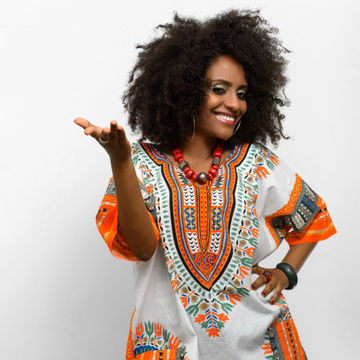
African attire is the conventional clothing worn by individuals of Africa. In some instances, these traditional pieces of clothing have been supplanted by western attire acquainted with Africans by European colonialists. (England)
The development of African dress is challenging to follow due to the absence of verifiable proof. Although ancient rarities from Egyptian culture date back to before 3000 B.C., no comparable evidence is accessible for the vast majority of the African mainland until the mid-20th 100 years. Sources from Arab culture allude to individuals of northern Africa by the eighth century C.E. Yet, many early African apparel history has been sorted out from craftsmanship, oral chronicles, and customs that are gone on by present-day ancestral individuals.
The Concept and Objectives
Wearing African attire is a brilliant way for some to commend our social legacy and celebrate our homeland's magnificence. The task zeroed in on African Heritage. It investigated the historical backdrop of African attire, the significance, implications, and otherworldliness of the varieties. It additionally took a gander at the African head wrap (scarf).
African Women's Clothing
Traditional African ladies' clothing comes in different styles, prints, and varieties, going from earth tones to dynamic indigos. Ladies' clothing might incorporate beaded skirts, covers, and shrouds with intricate themes. African ladies are known for their bright gems, produced using copper, globules, and grasses. Ndebele ladies living in South Africa's Gauteng Province are noted for wearing beautiful customary dressing enhanced with beadwork. Since temperatures can take off as high as 125 degrees in the Sahara Desert, it's not unexpected to see ladies there going topless.
African Men's Clothing
In East Africa, kangas and kitenges are like T-shirts and are, in many cases, worn around the midriff in sweltering climates. The public dress for Kenyan men is a long-sleeved dashiki shirt, which goes with matching jeans and a kofia (cap). A few men wear kaftans, albeit today they're generally worn by ladies. Men from Tanzania wear a white robe called a kanzu with a tuft and a little round cap (kofia), while the Buganda men of Uganda (in east Africa) wear dashiki shirts and a cap for casual occasions.
Clothing for Special Occasions
Africans keep on wearing exceptional apparel for different African customs and extraordinary occasions. For instance, at commitment services and ceremonies praising a young lady entering womanhood, Kuanyama ladies wear conspicuous attire. Ladies have more dots on their collars following a wedding service and wear metal hoops, tantamount to wedding bands. Western African ladies getting hitched wear huge elaborate head ties. Zulu young men seeking young ladies wear Western apparel they purchase in the city, alongside a goatskin front cover attached to a beaded belt.
African Innovative Clothing
The headwrap began in sub-Saharan Africa and was frequently used to convey success. Indeed, even African men wore head wraps to represent abundance and economic wellbeing. In a real sense, the head wrapping was a way that Africans for quite a long time have had the option to impart their place throughout everyday life non-verbally. They were made to comprehend that the headwrap of a lady strolling down the road would let them know if she was a widow, a grandma, or on the other hand, assuming she's a married young lady. It was a component in the day-to-day living of an African lady. Headwraps likewise served a helpful capacity in shielding the head from the sun's beams. In West Africa, head wraps are alluded to as 'gele' in Yoruba or 'ichafu' in Ibo.




